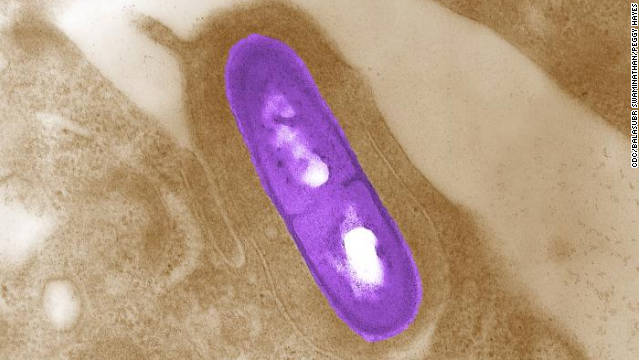Everything You Should Know About Listeria & Listeriosis

From spinach and sprouts, to hummus and ice cream, foodborne outbreaks are more commonplace than you’d expect; and Listeria is one of the main culprits. When a Listeria outbreak happens, it can cause serious interruptions to the food service industry. Just look at a few years ago, when Jeni’s Ice Cream and Blue Bell Creamery shuttered kitchens and scoop shops to better understand and eliminate the source of a recent contamination. So what exactly is Listeria, and how does it get into our food and into our bodies? And perhaps most importantly, what must manufacturers do to clean it up?
View: Updated FDA food recall list
What is Listeria?
Listeria is a common bacterium found in soil and water that is easily transmitted to kitchens and manufacturing facilities via raw vegetable or animal products. Once it contaminates an area, it can be challenging to get rid of; unlike most bacteria, Listeria grows well in refrigeration. Often found in processed meats and unpasteurized dairy, Listeria may infect other foods through contact with affected equipment.
Symptoms of Listeria/Listeriosis
When a person contracts Listeria, it causes symptoms that mimic food poisoning. If someone has invasive listeriosis, meaning the bacteria spread beyond the gut, symptoms can include:
- fever
- muscle aches
- gastrointestinal complications.
- chills
- stiff neck
- confusion
- convulsions
Listeria generally impacts only the elderly, people with compromised immune systems, and pregnant women. It can cause miscarriage, stillbirth and premature labor for women, and may lead to serious illness or death in newborn babies and older adults. Most healthy children and younger adults can consume Listeria with little ill effect.
How to Prevent Listeria Outbreak
To keep an environment free from Listeria, there are a few things to keep in mind:
- Before you can eliminate bacteria you must first remove all grime and dirt from a surface area. This allows the disinfectant treatment to reach the source of the problem.
- Combination detergent/sanitizers are typically ineffective against Listeria outbreaks. An EPA-registered stand-alone disinfectant helps guarantee that deadly bacteria is eliminated.
- Clean/disinfect often. Increasing the concentration of product will not compensate for inadequate cleaning. When using any cleaning product, follow the manufacturer’s directions exactly. Disinfectants must be applied in the prescribed amount and left on surfaces during a “cure time” in order to fully treat the area.
How to Test for Listeria
The most effective way to tell if you’ve been infected by Listeria is via blood test. In some cases, urine or spinal fluid tests may also be in order. That being said, antibiotic treatment will likely begin before a confirmed diagnosis, particularly if you are susceptible (pregnant, elderly, or weakened immune system) to the more severe symptoms.
Aftermath Services: Infectious Disease Remediation Available 24/7
For business owners, the threat of Listeria can be costly. As we’ve witnessed in the past, Listeria outbreaks can lead to delayed production, plant closings, and expensive fines and lawsuits. Fortunately, communicable disease and industrial biohazard cleanup are services offered by Aftermath Services.
Not all janitorial companies are equipped to handle the difficult process of Listeria cleanup, but Aftermath technicians are skilled at handling germs, bacteria, and bloodborne pathogens. We also adhere to all policies that apply to local, state, and federal regulations, including Lock-Out Tag-Out procedures and proper use of PPE. This is how we help protect our employees, while also protecting your workers and customers.
Learn more about biohazard cleaning or call 877-698-1576. We can be at your doorstep within a few hours of your initial call.
 877-872-4339
877-872-4339  Contact Us
Contact Us 






